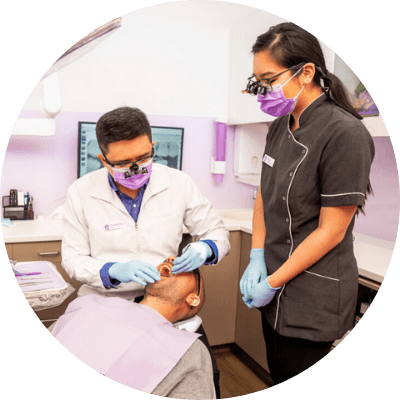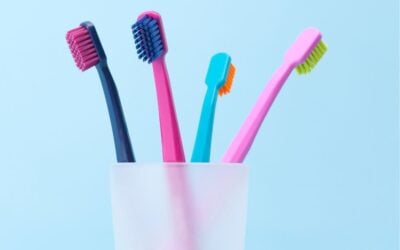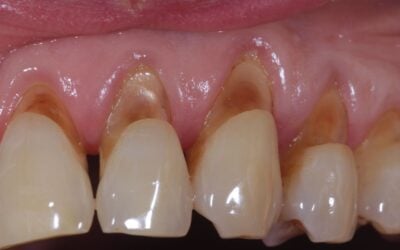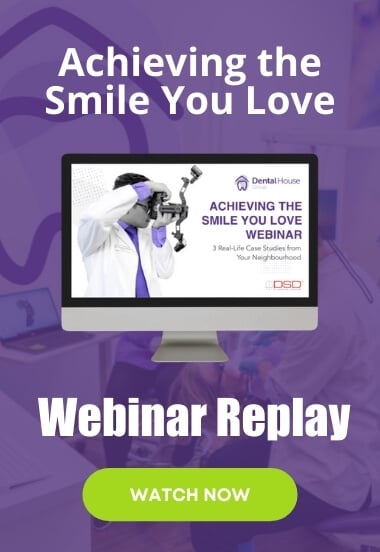Autism at the Dentist’s: Autistic Patients to be Applauded
Autism at the Dentist’s: Autistic Patients to be Applauded

In spite of the cowardly way we humans continue to behave en masse, there’s still a lot of singular bravery going on in this world.
For many, it’s a daily occurrence.
Louise Medus, is one of around 10,000 thalidomide babies born between 1957 and 1962. Her memoir No Hand To Hold & No Legs To Dance On recounts a life where the first 17 years were lived in residential care for disabled children, and the decisions she continues to make in order to live the family life she has been driven to create.
Melissa Stockwell was 24 when she lost her leg to a roadside bomb in Iraq as a serving First Lieutenant in the US Army. Awarded a Purple Heart, she went on to become a triathlete, taking home Bronze at the 2016 Rio Paralympics.
There’s the constant chasing of moving targets. Adapting to a certain level, surmounting newly presented difficulties, adjusting and adjusting to changes that change then change again in the unfairly urgent and rigged game of gradually or spontaneously going blind.
There are billions of journeys of endurance, milestones, fragility and entire lives of pain. These are incredible people living improbable lives of impossible odds; unimaginable to those not poverty-stricken, war-torn, disease-ridden, disaster-struck or trauma-disordered.
These people are among us; we are they. And if not us, it stands to reason that we must each, on a daily basis, come across, have dealings with, and even actively avoid these people committing acts of silent bravery: the weft woke of Thoreau’s mass-lead quiet desperation.
The song is, however, still in them, and they’ve not yet made it to the grave.
Thoreau believed in something of a greater human inside us all – whose inner desires are exactingly suppressed because of the pressure and censure of societal expectations.
As is often remarked, society is the sum of its people – so that repression is indeed of our own doing. American cartoonist Walt Kelly’s Pogo declared way back in 1970 that, “We have met the enemy, and he is us.”
We know. We’ve always known. We just don’t want to.
So unannounced, so undetected, and so unendingly unacknowledged, it’s time to applaud the utter courage it takes to live with autism, and the terror of going to the dentist – a tough enough task for anyone not on any spectrum as national oral health data consistently reveals.
What is it about autism that makes going to the dentist overwhelmingly fear-filled?
From the aspect of social beings, the focus on autism tends to be its social challenges – the difficulties communicating, multidisciplined difficulties forming relationships and an inability to experience empathy.
At the extremes of this neurodevelopmental condition is the affected ability to understand the perceptions and opinions of others. Often, there is hypersensitivity to sensory input such as sound, light, or shadow and expression is problematic because of limitations in verbal communication, or reduced non-verbal language. Commonly, there is strong interest in a specific topic, activity or thing, obsessions and intensely detailed focus, and vast challenges with generalising new information and abstract concepts.
The non-social features of autism, however, are assuredly front and centre: an extreme and intense insistence for sameness along with atypical responses to sensory stimuli; and an astounding ability for detail. There is no holistic explanation or comprehensive list of the condition’s symptoms, so perplexing and diverse are its features.
And the lives and lifestyles of autistic people are as diverse and enigmatic as the features of this spectrum disorder that continues to frighten and enlighten us.
Try to segue that into the clinical, sharp-smelling, sharp-sounding, hard-edged, metal-filled and drilled cockpit of the pilot of that dental chair.
Identifying specific causes of autism spectrum disorder (ASD) is itself, problematic.
Often it’s a combination of some common, and rare variants of inherited and spontaneous DNA traits. Studies now link more than 70 genes to the disorder – and at least $US300 billion just counting the nett worth of ASD affected Elon Musk, Bill Gates and the eternally jobless Steve Jobs.
Studies localise a subset of ASD risk to specific spatiotemporal windows as an open and shut case. Recent developments in systems biology approaches that ‘contextualise’ genetic findings along the spatial, temporal, and cellular axes of human brain development are beginning to bridge the gap between high-throughput gene discovery, and testable pathophysiological hypotheses.
Had the ASD different brain disorder not disordered the arts (allegedly) from Michelangelo to Mozart and blind multi-instrumentalist Tony Deblois, had autism and Asperger’s not snaked through the sciences from Newton to Tesla and onto Einstein, and had film-making been left uninfiltrated by the likes of the now-and-forever-controversial Woody Allen, pioneering visionary Stanley Kubrick, and the sharp and teasing skill of Sir Anthony Hopkins, we would indeed be culturally poorer and intellectually more stupid from the lacklustre lack of it all.
Along with a multiplicity of therapies, from behavioural management and medication to parent-mediation and early intervention, ASD also prompted a novel therapeutic approach designed by Kelly Hunter MBE, of the Royal Shakespeare Company.
Developed in conjunction with Ohio State University psychologists, its empirical outcome remains unproven – but the process of it is compelling.
Hunter first began working with autistic children in 2002 during her time with the RSC and having set up her own company, Touchstone Shakespeare Theatre. TST was for children – some with autism – who had little, if any access to the arts.
It was through this work that the Hunter Heartbeat Method became an innovative and distinctive methodology across the spectrum of autism for releasing communicative blocks in children – including those who are non-verbal. It uses the iambic pentameter of Shakespeare – the heartfelt core rhythm of language – along with physical gestures and movement as an outlet for precision of expression.
It’s a technique supported by the UK’s National Autistic Society, which makes available copies of Dreams and Voices, a documentary on the early games of the heartbeat technique.
In 2014 at the Royal Shakespeare Theatre in Stratford-on-Avon, Hunter directed children with autism in a production of The Tempest before taking the tour to Ohio State University.
In it, seven actors circle a swirling blue, gold and white painted form in the middle of the stage.
Interspersed are fourteen intellectually or physically disabled children, many appearing largely withdrawn. A 12-year-old girl sits quietly in an electric wheelchair.
The professional cast take turns enticing their charges onto the colour to play simple games: practicing facial expressions, chanting, or gesturing the narrative of an emotional scene from Shakespeare’s thirty-sixth of his thirty-eight works.
The experience really wasn’t for the audience.
The ticket read: “The Tempest: suitable for 8 to 24-year-olds with autism.”
Though it was not written for them, the audience remarked it as possibly one of the most moving things they have ever seen. Every child engages, many with unquestionable joy; even those who seemed so unreachable at the start.
It works because the core abilities required for drama are a striking match with what is frequently described as the triad of ASD impairments: communication, imagination and social interaction.
The Hunter Heartbeat Method is a powerfully emotional reach across the divide of disability; between brave and willing participants, and theatrically gifted guides.
Conventional ASD therapies focused on ‘fixing’ the condition: stifling repetitive actions or sounds, drilling for eye contact, speech rehearsal, and practising social interactions.
What it actually was, was attempts to remove the classic behaviours associated with the condition so that ultimately, the child would no longer meet the diagnostic criteria for autism.
There was a Trumptastic adoption of that principle during the rapid rise of COVID-19 cases in the US. If you don’t want the cases, don’t test for it.
Now widely acclaimed as wrong-minded, it’s acknowledged that there are many ways to be well functioning and happy – and having an atypical brain is one of them.
Let’s face it, people with conforming brain complexities are not guaranteed happiness or high function either; they remain elusive goals for most.
Ask Thoreau.
There’s been a move away from considering ASD a presentation of conditions that need to be eliminated or drastically altered, to understanding the spectrum of autism as part of the neurodiversity that exists across humankind.

Autism Is For The Courageous: Going To The Dentist Requires A Certain Bravery That’s To Be Applauded
The question is then, how do we best support the autistically experienced, and how is improvement realistically measured?
Is the reflection of the extensive reframing of therapy outcomes the metric of success? That it is driven in part by the many voices of people on the spectrum is a veritable marker of continuing progress. That the self-advocating have awakened and fostered a greater appreciation and wont for a society where different brains contribute and change the paradigms of our world is an immeasurable measure.
We’re moving from genes to neurobiology. That’s big.
From the original contention that ASD people behave in ways that are unnatural to them, to now the sensitive and sensorial altering of the new and confronting environment of a dental clinic, is the type of recognition that more than 168,000,000 people worldwide have been waiting for from one perspective or another and quite a few you would never even have considered.
The five countries with the highest prevalence of ASD are Britain, Sweden, Japan, the US and the Netherlands.
Libya, North Korea and Taiwan rate the lowest. Which raises at least two questions: how is it tested, and are they too busy working?
Curiously, ASD is accepted as a developed-country thing: the differently brained equivalent of uptight, white and outta sight. (Yes, Pogo we are back in the ‘70’s!)
With an array of restricted or repetitive patterns of thought and behaviours, about 1-in-54 children is diagnosed as having ASD. Certain behavioural characteristics, such as difficulty with changes in routine, being in unfamiliar surroundings, or sensory processing differences make preventative dental care particularly demanding – particularly with research revealing that children with autism have a higher risk of dental disease.
ASD can make the healthy dental hygiene habits of brushing and flossing nigh impossible because of sensory sensitivities. Habits like teeth grinding, mouth tapping, chewing non-food objects, and high intakes of refined foods certainly affect oral health. Add to this the difficulties communicating problems with their teeth, resulting in treatment delays.
There is no big picture for many ASD people – the picture they see is intense, it’s micro-detailed and it is structurally structured. People with autism often require some type of support throughout their lives that may include speech therapy, occupational therapy, psychological counselling, educational coaching and behavioural modification support.
The autism spectrum designates many specific needs and preferences – all simply discussed with your dentist and their team.
Useful strategies include noise-cancelling headphones, listening to music, a weighted blanket or vest, sunglasses, turning off fluorescent ceiling lights, limited talking during the dental procedure, or watching a favourite video.
Being able to watch the simple procedure happening to them on video may be helpful. Panoramic x-rays that don’t involve items in the mouth are usually better tolerated than conventional intra-oral dental x-rays.
A parent or caregiver is always able to comfortably stay by the patient.
Providing visual supports, making first/then statements, (e.g. first you open your mouth, then I count your teeth), telling stories and using digital models can help those with more severe ASD see the process and the steps.
Some ASD people find gradual introduction of benefit: taking one step over multiple and successive visits, rather than accomplishing everything at once. Most dental clinics offer desensitisation visits in preparation for any procedure.
Anxiety-relieving medications certainly help, and are sometimes rather necessary. Many dentist-goers will vouch for that …
Developing a successful plan for anxiety reduction is an important part of the overall dental care of a person with ASD.
Even with accommodations and adjustments, some will still struggle with the invasive nature of dental check-ups and procedures. Calming medications and light sedation prior to the dental visit are as equally useful options; as is general anaesthesia when it’s required for the better oral health of any person – not just those with ASD.
Indeed we are our brutally challenging and changing world, and not coming to grips with much of it. We are at least and at last, acknowledging the prevalence of autism’s significant global increase over the past few decades and its daily effect on daily lives.
In the United States for instance, the prevalence of ASD between the year 2000 and 2018 has increased from 1-in-150 children to 1-in-44.
We’re obviously very right in whatever we’re doing so terribly wrong. There’s no medal for that.
The kudos and the applause is swirlingly blue, gold and white, centre stage: the bravely unwilling entwining disability with the skilled and gifted dentists. In a heartbeat, adjusting and accommodating the needs of the uniquely wired.
For many, it’s a daily occurrence.
DISCLAIMER:
The content has been made available for informational and educational purposes only. New Gisborne Dental House does not make any representation or warranties with respect to the accuracy, applicability, fitness, or completeness of the content.
The content is not intended to be a substitute for professional personal diagnosis or treatment. Always seek the advice of your dentist or another qualified health provider with any questions you may have regarding a dental or medical condition. Never disregard professional advice or delay seeking it because of something you have read or seen on the Site.













